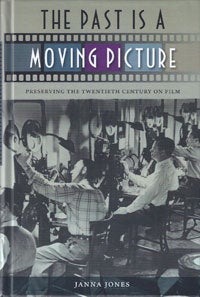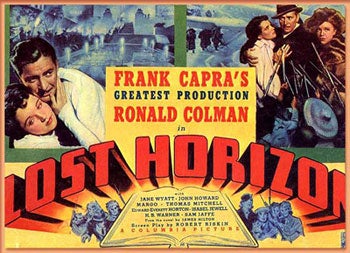One indication of the rapidly maturing field of moving image archiving has been the publication of a number of books over the past several years on the history of the field. These works have been published not only by actual archivists, like Giovanna Fossati of the Amsterdam EYE Institute, but especially by film studies academics, looking at film archiving and film preservation as a now legitimate adjunct to the entertainment industry. That industry has traditionally included production, distribution and exhibition, to which has now been added preservation and legacy access.
While some authors have looked at the history of one institution, e.g. the Museum of Modern Art (Haidee Wasson, Peter Decherney), more recent work has surveyed the field as a whole. Caroline Frick’s published dissertation, "Saving Cinema. The Politics of Preservation" (2011), for example, is the first book-length study to attempt to encompass the whole history of moving image preservation and the development of film archives. My review of that book will be appearing shortly in "The Moving Image," but I note there that Frick formulates the highly controversial thesis that in the digital age, access should take precedence over preservation, better said, the multiplicity of digital access copies constitutes preservation in itself, making attempts at analog preservation obsolete and unnecessary.

Now comes Janna Jones’ book, "The Past is a Moving Picture. Preserving the Twentieth Century on Film" (2012), which has set itself a more limited goal, namely to provide a history of analog film preservation in the last century, rather than discuss the state of a field in digital flux. Within those parameters, Jones interviewed numerous practitioners in the field, searched out and analyzed historical documents, and provided close readings of such publications as the "United States Congressional Hearings, Film Preservation 1993: A Study of the Current State of American Film Preservation." Having been a witness myself at those hearings—personally, I find it hard to believe that I have myself become an historical artifact—I’m struck today by how clueless literally all the participants of those hearings were about the digital tidal wave that would wash over the field in only a few short years. Not one person predicted the end of analog cinema, certainly not within a little more than a decade.
Given Jones’ reliance on oral histories, the book does sometimes tend to fall into the anecdotal; nevertheless, the author does provide some important theses to structure her history of film preservation in the United States. She notes, for example, that the argument of film preservationists attempting to garner public attention for their work always centered on scarcity and loss (i.e. 90% of all silent films lost forever) even while archivists were being institutionally overwhelmed by massive amounts of film material entering the archive, especially as film preservation institutions shifted from an exclusive focus on Hollywood feature films to documentaries, newsreels, industrials, educational, amateur film and other “orphaned” moving image media. As Jones notes:
“A dialectic of creation and destruction, control and chaos has shaped the twentieth century moving image archive, resulting in an environment of logic and ingenuity, as well as order and disruption.” (p. 9)
I like the irony, because it is completely true and yet no one I know who was a practitioner in this period, including me, saw that contradiction. Like the phrase, “Nitrate Can’t Wait,” another scare tactic we archivists used—although admittedly we didn’t really know about storage until the early 1990s, when nitrate suddenly could wait (if stored properly at 30% RH and 35° F ± 2°).
Jones also theorizes that the impetus for the creation of moving image archives was in part the result of a wish to demonstrate the cultural, aesthetic and political power of the United States, to utilize historical moving images for the writing and control of history. However, as the century wore on:
“[T]he meanings of the film archive became less and less controllable,… helping to liberate the archive from its original inclinations toward historicism and its nationalistic underpinnings.” (p. 51)

Given this lens, Jones notes that film preservation funding from the National Endowment for the Arts reflected Cold War policies and once the Cold War ended, so did funding, leading to the creation of the National Film Preservation Foundation, whose mission was to fund “orphan” films, which reflected a cornucopia of ideologies rather than American Cold War perspectives. I find this thesis provocative, but possibly only one explanation. Interestingly, the AFI/NEA film preservation work mainly benefitted the Hollywood studios, i.e. public money funded commercial property. Congress eventually balked at that proposition, as demonstrated by their refusal to fund a National Television Preservation Foundation, but they were willng to put money into films that were in the public domain, hence today’s structure.
In the final chapter, Jones discusses various preservation and restoration case studies to indicate both the heterogeneity of such projects and the institutions engaging in such work, including UCLA Film & Television Archive with Bob Gitt, and also their structural inability to recreate a cohesive past; of necessity, they approach the past through the eyes of the present. In other words, all film restorations, no matter how faithful to an imaginary original, will always be reconstructed in the present tense. A good read for anyone interested in the field.






 Mobile Navigation
Mobile Navigation

